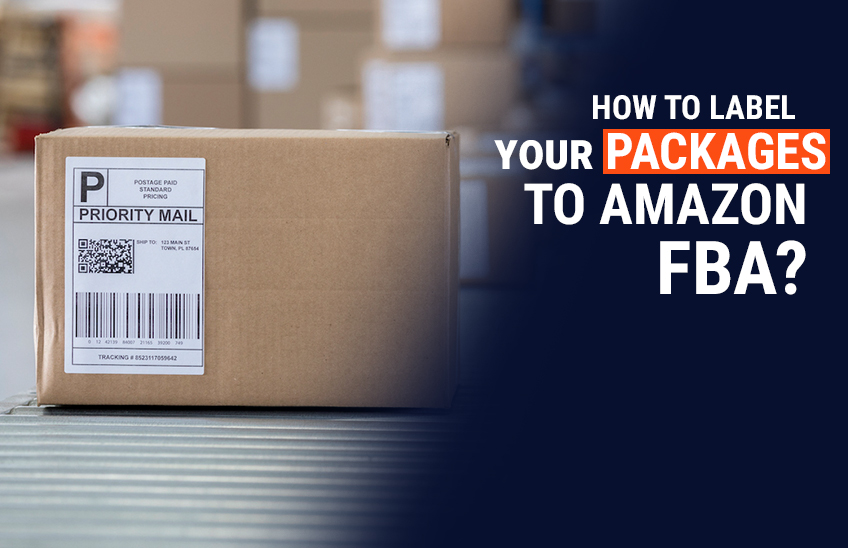The Ultimate Guide: Packaging and Labeling Products for Shipment to Amazon

In the bustling world of e-commerce, efficient packaging and labeling are critical components of successful order fulfillment, particularly when partnering with Amazon’s Fulfillment by Amazon (FBA) service. Properly packaged and labeled products not only ensure safe transit but also streamline operations, reduce errors, and enhance the overall customer experience. In this comprehensive guide, we will delve into the intricacies of packaging and labeling products for shipment to Amazon, providing detailed instructions, best practices, and valuable insights to help sellers navigate this process effectively.
Importance of Packaging and Labeling for Amazon Shipment
Before we dive into the specifics of packaging and labeling, it’s essential to understand why these aspects are crucial:
- Protecting Products: Proper packaging safeguards products from damage during transit, reducing the risk of returns and ensuring customer satisfaction.
- Streamlining Operations: Well-labeled packages expedite the receiving and storage process at Amazon fulfillment centers, minimizing processing times and improving efficiency.
- Compliance with Amazon Guidelines: Adhering to Amazon’s packaging and labeling requirements is essential for ensuring smooth processing and avoiding penalties or delays in inventory processing.
Packaging Guidelines for Amazon Shipments
When preparing products for shipment to Amazon fulfillment centers, sellers should follow these packaging guidelines:
Use Appropriate Packaging Materials
Choose sturdy and durable packaging materials that provide adequate protection for your products during transit. Opt for boxes, polybags, or padded envelopes that are suitable for the size and shape of your items.
Ensure Proper Cushioning
Use sufficient cushioning materials such as bubble wrap, packing peanuts, or air pillows to protect fragile or delicate items from impact and vibration during shipping. Fill empty spaces in the packaging to prevent items from shifting during transit.
Seal Packages Securely
Seal packages with high-quality packing tape to prevent tampering and ensure that contents remain secure during shipping. Use multiple layers of tape for added reinforcement, especially for heavier or bulkier items.
Label Packages Appropriately
Clearly label packages with the recipient’s address, including the Amazon fulfillment center address and the unique shipment ID generated through Seller Central. Avoid covering important information with tape or labels to ensure readability.
Labeling Requirements for Amazon Shipments
In addition to proper packaging, sellers must adhere to Amazon’s labeling requirements for FBA shipments:
Apply FNSKU Labels
Each product must be labeled with an Amazon-specific barcode known as the Fulfillment Network Stock Keeping Unit (FNSKU) label. This label uniquely identifies the product and allows Amazon to track inventory within its fulfillment network.
Place Labels Correctly
Affix FNSKU labels to the product packaging in a visible and easily scannable location. Avoid placing labels over seams, folds, or other surfaces that may hinder scanning or cause the label to peel off during transit.
Avoid Covering UPC or EAN Barcodes
If your products already have Universal Product Codes (UPC) or European Article Numbers (EAN) printed on them, ensure that these barcodes are not covered or obscured by FNSKU labels. Amazon requires clear visibility of original barcodes for certain products.
Provide Amazon-specific Packaging Information
Include additional packaging information as required by Amazon, such as suffocation warnings for polybags or expiration dates for perishable goods. Failure to comply with these requirements may result in penalties or restrictions.
Best Practices for Packaging and Labeling
To optimize the packaging and labeling process for Amazon shipments, sellers should consider the following best practices:
- Standardize Packaging: Develop standardized packaging procedures and materials to ensure consistency and reliability across all shipments.
- Use Professional Printing Services: Invest in high-quality printing services for FNSKU labels to ensure clarity and accuracy. Avoid handwritten labels, which can be difficult to read and prone to errors.
- Implement Quality Control Measures: Conduct thorough quality checks to verify that products are properly packaged and labeled before shipping to Amazon fulfillment centers. This helps prevent issues such as mislabeled products or damaged packaging.
- Stay Updated on Amazon Guidelines: Regularly review and familiarize yourself with Amazon’s packaging and labeling requirements, as they may be subject to change. Subscribe to seller notifications and updates to stay informed of any policy revisions or new requirements.
Conclusion
Effective packaging and labeling are essential elements of successful order fulfillment for Amazon sellers. By adhering to Amazon’s guidelines, utilizing appropriate packaging materials, and applying correct labeling practices, sellers can ensure that their products are delivered safely and efficiently to Amazon fulfillment centers. Continuously evaluate and refine packaging and labeling processes to optimize efficiency, reduce errors, and enhance the overall customer experience. With careful attention to detail and adherence to best practices, sellers can streamline operations and maximize success in the competitive world of e-commerce.




